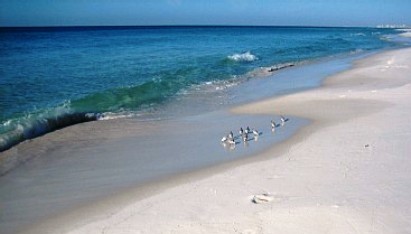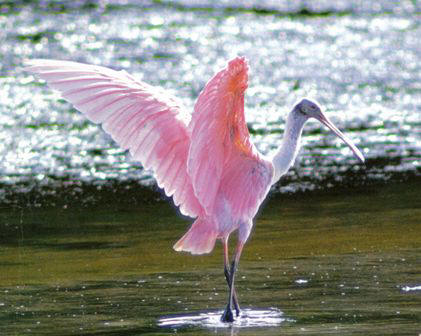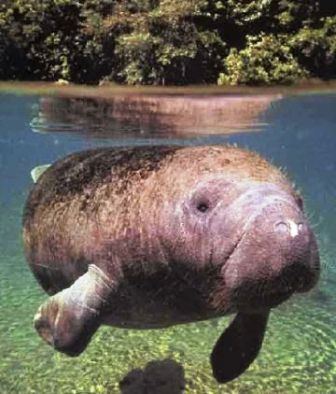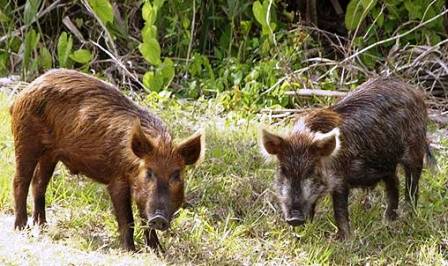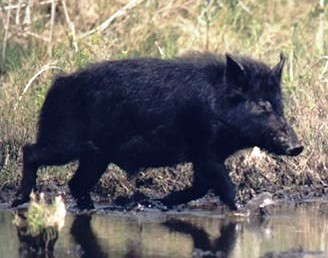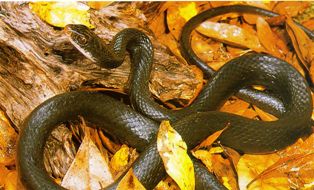People aren't the only snowbirds that come to Florida in the winter. Over 175 bird species are known to
breed in Florida and almost three hundred birds migrate here in the fall
spring or winter months.Florida bird habitats
range from isolated islands of the Dry Tortugas to remote interior
swamplands and our increasingly numerous suburban backyards. All of Florida's native birds are protected under the
Federal Migratory Bird Treaty
Act and are also protected under state law, and may not be trapped
or killed without federal permit.
Endangered and threatened species are additionally protected.
Monday, November 24, 2014
Giving Thanksgiving thanks for beautiful Floridian nature!
Monday, November 17, 2014
Manatee Season
Citrus County is
currently the only place in the US where you can interact and swim with
the
West Indian manatee without
that act being viewed as harassment by Law Enforcement. This endangered
species makes Citrus County's spring fed rivers its wintering home. The
Crystal River National Wildlife Refuge, was established in 1983
specifically for the protection of the endangered West Indian Manatee.
This unique refuge preserves the last unspoiled and undeveloped habitat
in Kings Bay, which forms the headwaters of the Crystal River. The
refuge preserves the warm water spring havens, which provide critical
habitat for the manatee populations that migrate here each winter.
Wednesday, November 12, 2014
Florida's feral hogs
Wild hogs, often called feral hogs are common in Floridian nature. These hogs started as farm animals but once they escape they quickly turn feral and it doesn't take long for their looks to change. First brought to Florida in the 1500's when Hernando de Soto brought swine to provision a
settlement he established at Charlotte Harbor in Lee County, wild hogs are now found in every county in the state. While hunters love the opportunity to hunt a large hoofed animal, homeowners and especially golf course owners are not as happy to find them in the area. Unlike coyotes that may live in your area and seldom be seen, wild hogs make their presence known by rooting up everything in site. Wild hogs are omnivorous, opportunistic feeders. However, they consume
far more plant than animal material, and may occasionally consume
carrion. The list of foods eaten by hogs is diverse and includes grass,
forb, and woody plant stems, roots, tubers, leaves, seeds, and fruits,
fungi, and a variety of animals including worms, insects, crustaceans,
mollusks, fish, small birds, mammals, reptiles, and amphibians.
The the most part wild hogs are harmless, but males can be quite feisty and so are females with babies. I ran into a female hog on one of my walks and she had about 6-7 babies the size of a large football. I steered clear, although the babies started to come near me. I also ran into a male boar who came rushing out of the woods in a full sprint. I was startled to see the boar and more startled at the thought of what it was that the boar was running from! Average
adult males may weigh 200+ pounds, stand 3 feet at the shoulder, have
tails reaching 12 inches, and are almost 5 feet from the tip of the tail
to the tip of the snout. However, males greater than twice this size
have been recorded. Hogs have 4 continually growing, self-sharpening
tusks (2 in the upper and 2 in the lower jaw; the rubbing of upper and
lower tusks keeps them sharp). Tusks in females are relatively small,
while in males they become quite pronounced and have trophy value.
Monday, November 3, 2014
Brrr!!!
When I woke up this morning the outdoor thermometer read 37 degrees. This picture was from a few years ago when I awoke to some Florida snow. It certainly wasn't that cold this morning but wasn't typical a Florida temperature for November. With no clouds to be found the day remained cool but that Florida sunshine felt great on the skin and I wasn't the only one who seemed to notice. I opened my back door and saw a black racer sunning in the grass but he didn't stick around long enough for a photo.
Black racers are large, active snakes with smooth, shiny
scales. Adults average 23 to 50 inches in length, while young are about
15 inches long. Racers prefer dry open fields, meadows, forest clearings
and prairies. They are active in the daylight hours and can be
relatively easy to spot in the field because they often forage with
their head and neck raised above their body. Racers often bask in the
sun in low brush and can quickly disappear from view, thus the name
“racer.” They are the only species that will occasionally charge at a
person. This behavior is a bluff and the racer will retreat if
challenged. Racers eat a variety of rodents, insects, amphibians, other
reptiles, birds, and bird eggs.
Our yard is heavy with both live oak and turkey oak trees and every few years our live oaks put out a tremendous amount of acorns. I'm talking needing to wear a hard hat to go in the back yard amount of acorns! Live oak is a large spreading tree of the lower
Coastal Plain from southeastern Virginia to southern Florida. It
normally grows in low sandy soils near the
Coast but also occurs in moist
rich woods and along stream banks. On the Gulf Coast, live oaks often
support many types of epiphytic plants, including Spanish moss.
Subscribe to:
Posts (Atom)
